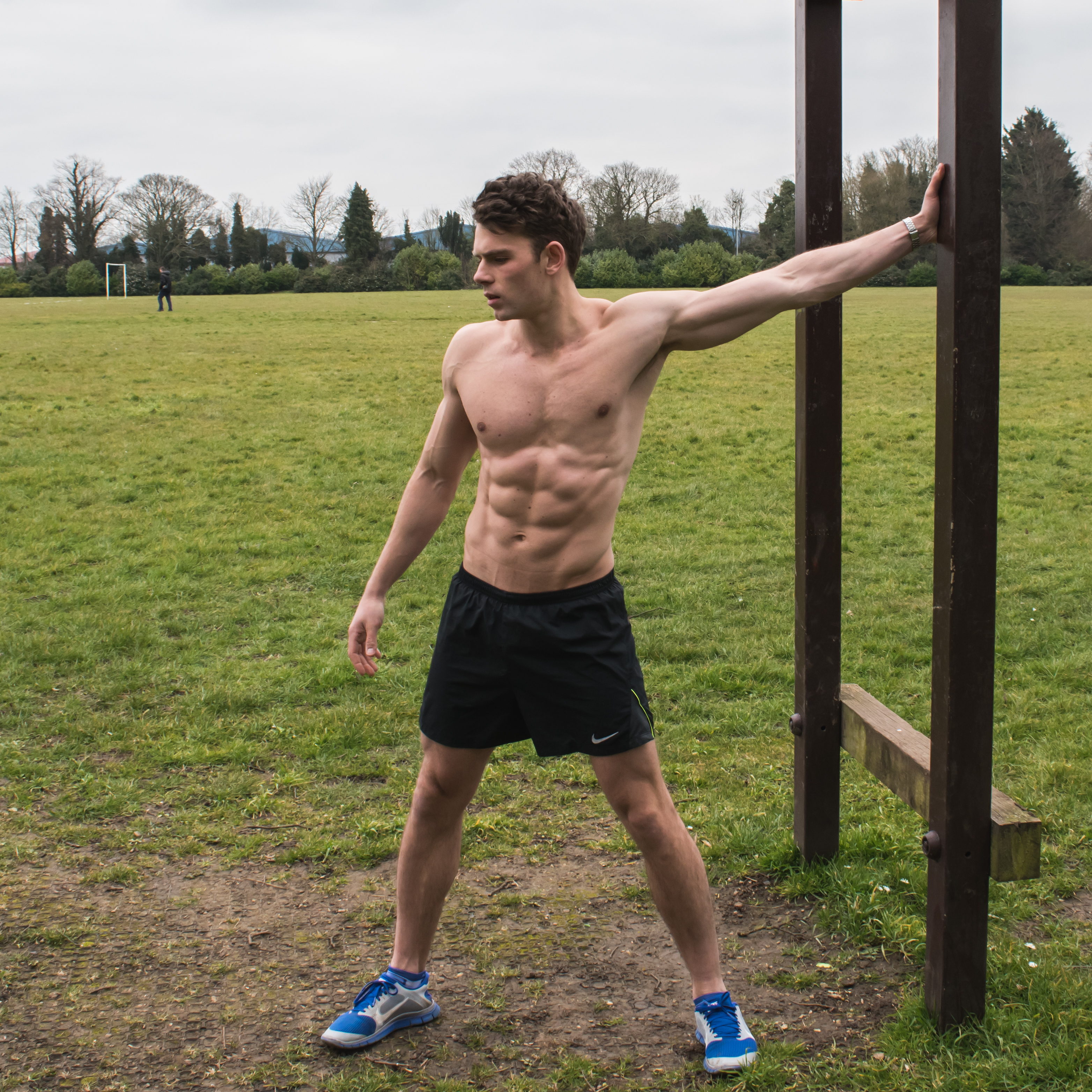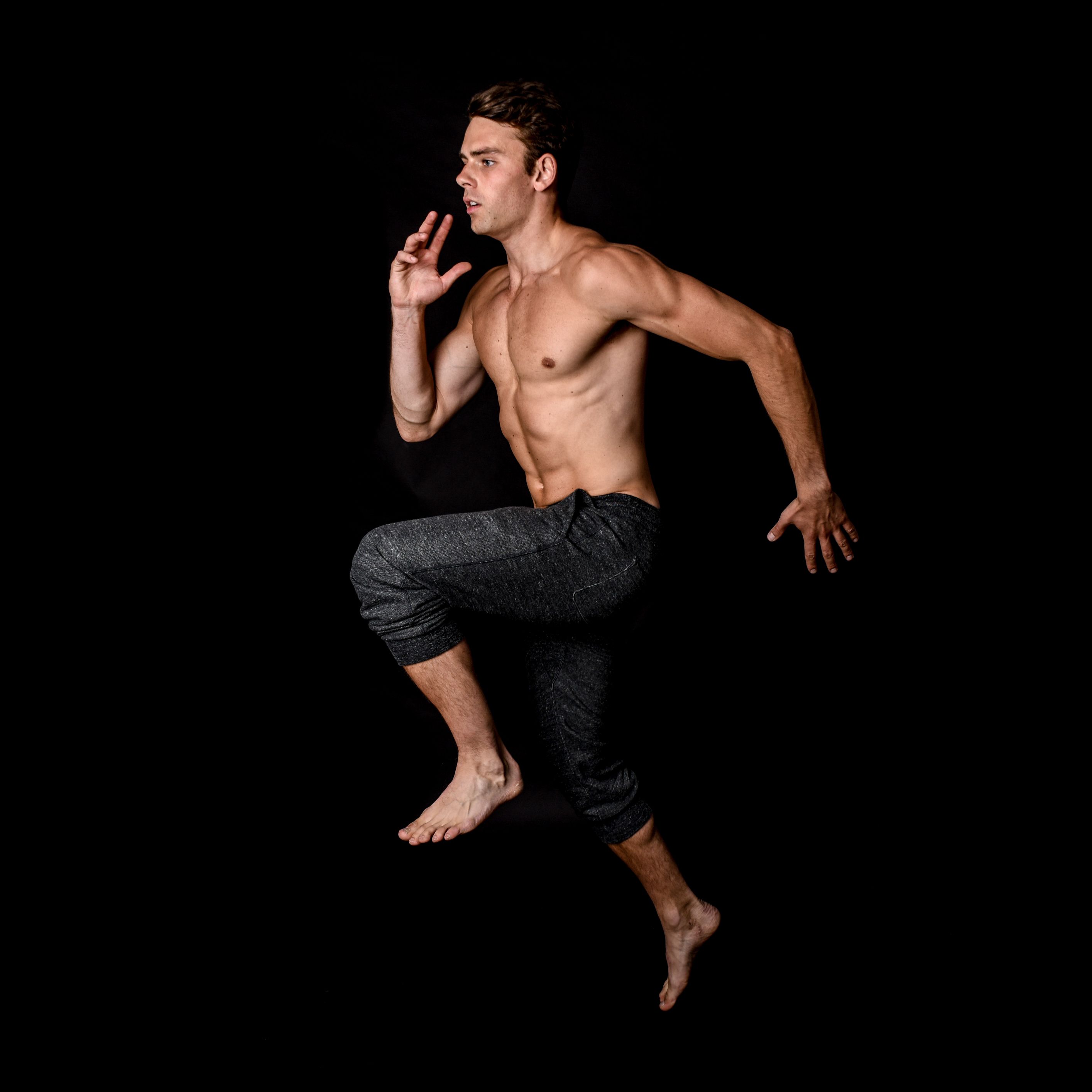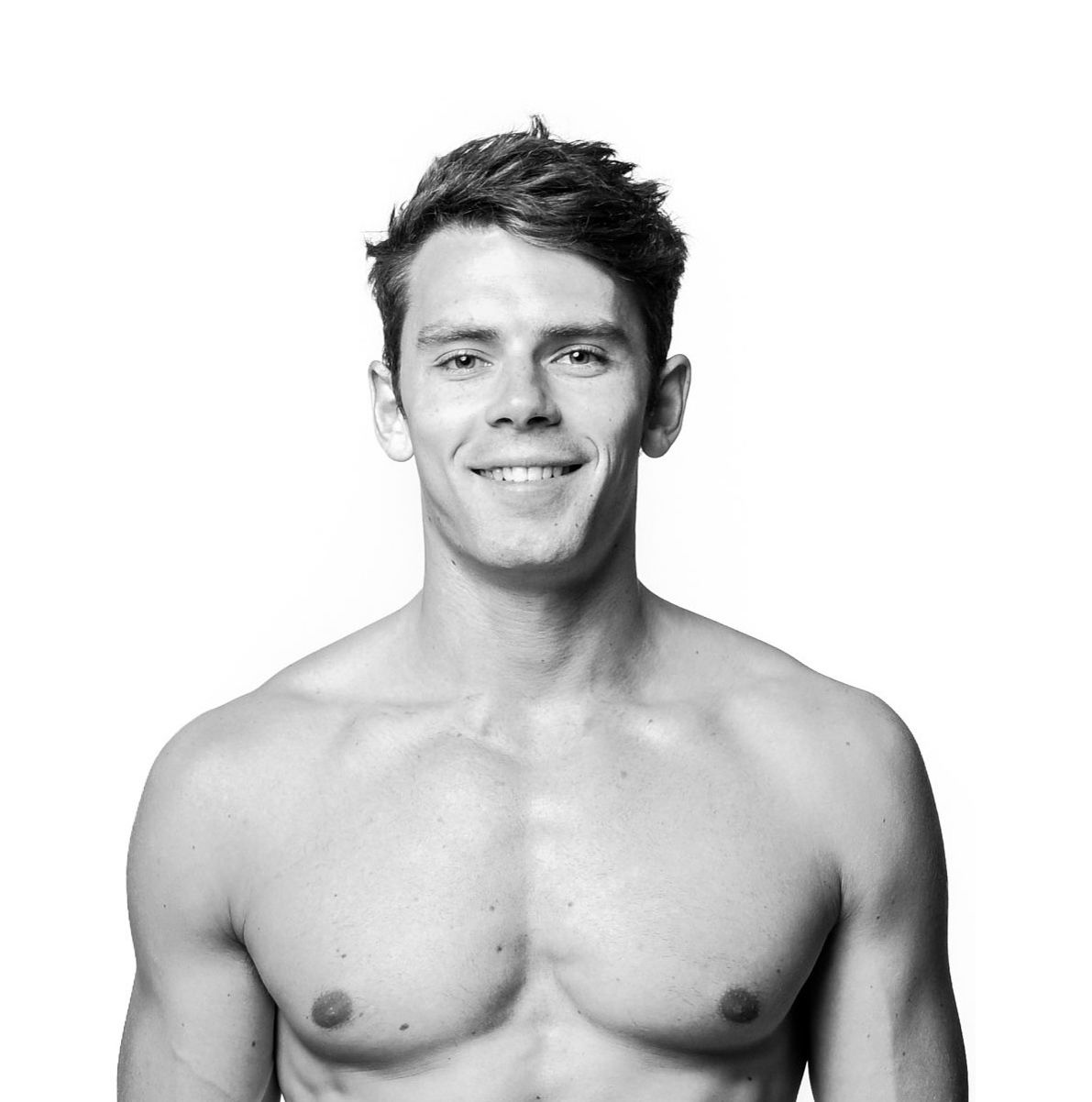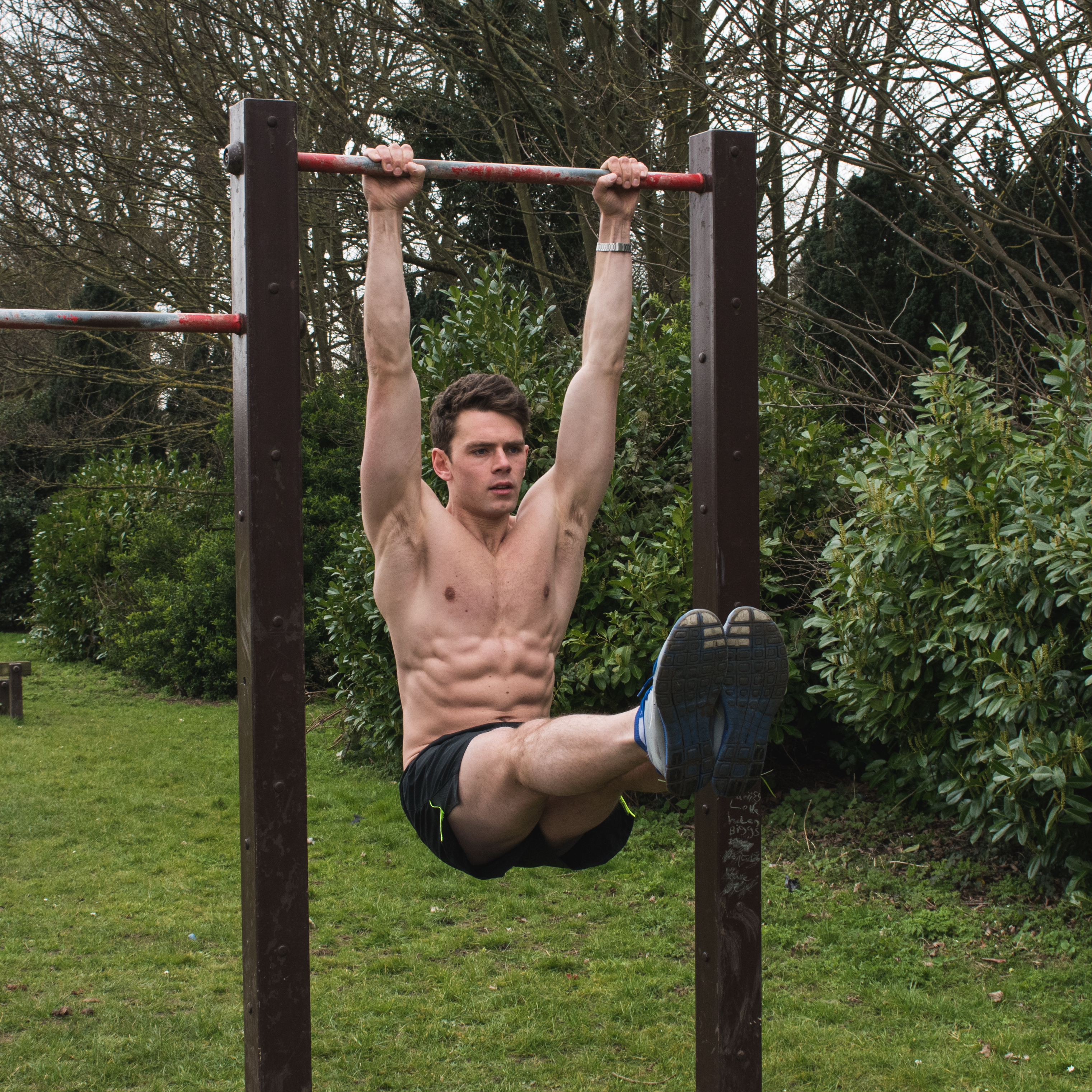Personal trainer Max Lowery is absolutely shredded.
But to get in such incredible shape he’s not done it in the ‘conventional’ way.
You won’t find him curling dumbbells at the gym or filling up eight boxes of food and ploughing through them over the course of the day.
Max got ripped by not eating – or more specifically intermittent fasting, where he eats all his daily calories in an eight hour window and then ‘fasts’ for the rest of time, putting his body in fat burning mode.
The aesthetic benefits are clear – but the heath benefits are pretty incredible too. He mixes this style of eating with functional, bodyweight strength training to get him in the shape of his life.
Max has combined his diet and training regime into a programme called The Fit Fast which he says is aimed to achieve the Brad Pitt aesthetic rather than the Arnold Schwarzenegger look.
He talked to JOE about how it works, how you can build muscle and shed fat without a gym, expensive supplements or without having to eat tonnes of food every day.
What’s the science behind it and how does it work?
With the 5:2 (diet) you eat normally for five days a week and then for two days you just eat 600 calories. That’s one way of intermittent fasting.
With my method you just eat two meals a day – so you either skip breakfast or the evening meal.
So at the start of the programme you decide whether you’re going to be a breakfast skipper or a dinner skipper. I personally have the best results from skipping breakfast, but I like to give everyone the option.
But essentially you’re not eating for 16 hours on your fast days and when you do that, some amazing things happen.
Everyone’s always like ‘you need to have breakfast for energy and to get your metabolism firing’. But all that happens if you’re constantly having breakfast and constantly eating food is you’re never giving your body a chance to burn its own stored body fat.
When you skip breakfast you go on with your day-to-day activities – walking, working or whatever, but using stored body fat as energy. That’s how we’re designed to be.
We’re designed to be fat burners and be able to burn our own body fat for fuel, but if we’re constantly eating carbohydrates and processed food, you’re never going to allow yourself to get into that fat burning state.
You’re going to have blood sugar fluctuations, energy fluctuations and you’re going to feel hungry all the time.
So that’s why fasting is so effective – you’re effectively burning your own stored body fat and normalising your blood sugar levels, which is going to normalise insulin levels, which is your fat storing hormone.
Then fasted training boosts that even more. I sprint competitively and I do all my intense cardio/sprint sessions fasted (If I compete I’m not fasted).
Basically when you fast, growth hormone is released which can help to build lean muscle mass but it can also help you burn more fat too. There’s also norepinephrine released which is a hormone that affects your mental alertness. The theory is that those two things would make you more efficient at catching food (back in prehistoric times) when you’re in a fasted state.
It’s not a slow process, but there is a transition phase where initially it’s going to feel really difficult, especially if you’re used to loading up on certain things before training or having to have your breakfast every morning.
But I just think it’s a better way to be, being dependent on your own body for fuel rather than being dependent on external things.
How did it work for you in terms of getting you leaner?
It all happened completely by accident in Brazil. I ended up eating just one meal a day. I still do that now – but only do when I’ve not trained. If I’ve trained in a day I need to eat more than one meal, primarily because it’s quite difficult to consume all of the calories you need in one sitting.
I got really, really lean (in Brazil) like down to 5 or 6 per cent body fat. But I put on muscle mass, so I looked really ripped.
Then I went back to eating three meals a day – cooking all my own food, pretty much low carb all the time and I went back up to 12 or 13 per cent body fat, which is still pretty slim. But I wasn’t happy because I was like ‘how was I so lean before?’
I was doing research on it and I was thinking ‘there’s just no way I’m not going to be able to have breakfast.’ ‘It’s not going to work’. People are so brainwashed by it. Everyone just comes out with exactly the same thing. ‘Oh breakfast is the most important meal of the day’ or ‘where do you get your energy from? You’re going to slow your metabolism down’.
I was thinking about all of these things, but because I was eating a pretty low carb diet anyway, and I wasn’t massively fluctuating my blood sugar levels and dependant on sugars from foods, I was a bit fat adapted anyway. Then I pretty much instantly reaped the rewards from it. I dropped down to maybe 6 or 7 per cent body fat again and I’ve never looked back since.
I’m anywhere between 7 and 9 per cent body fat, depending on what I’m doing in training.
I don’t count calories at all. I eat a lot in the two meals I eat. I enjoy it. I’m not deprived in any way and I feel great.
You do end up eating slightly less when fasting, but that’s not the goal at all. When I’ve calorie counted before, some days I’ve only eaten 1900 calories. That’s maybe when I’ve had one big meal. But for someone who is training as hard as me, that’s not very much at all.
I haven’t done that consistently, but I’ve felt absolutely fine.
I’m so convinced that we’re all eating too much when we’ve got all this stored body fat to keep us going.
The problem is massive food companies want us to be eating non stop, because they’ve mad all these what I call ‘food-like products’ where they sit there with a scientist and look at how they can make a food that’s as addictive and profitable as possible then massively market it as ‘healthy’ and pay sports stars t endorse it.
The whole thing is fucked up. That’s why everyone is so brainwashed by it all because the marketing has been so clever.
Have you found that it affects your performance when you’re doing your fasted training at all?
What I do with sprint training is very, very intense. You’re using the top creatine/phosphate energy system and anaerobic system, so you do need some carbohydrate for that.
When I’m fasted, I don’t find it a problem training, but I definitely do feel a difference when I compete if I do have something beforehand.
But if you’re doing the more endurance events like marathons and triathlons, there are now all these athletes that are becoming ‘fat adapted’ which means they’re running on their own body fat for fuel rather than the carb loading and having all these simple sugars through the whole race.
Do you find it’s difficult to train high intensity in a fasted state?
I actually prefer it. If I have anything in my stomach I just feel heavy and don’t feel as powerful in some ways.
What I do is have green tea before workouts. I’m pretty sensitive to caffeine – I don’t have too much caffeine. I normally have a strong green tea before a workout and I feel full of energy the whole way through and I feel lighter the whole way through, so yes I do feel much better training fasted.
https://www.instagram.com/p/BI9UsCQjPEP/?taken-by=max.lowery
How does it work in terms of muscle breakdown?
When you fast, growth hormone is released so it will help prevent the muscle from breaking down, if not induce the building of muscle.
Growth hormone is really crucial in the building of muscle mass.
I don’t drink protein shakes, I never have. It’s all marketing in my opinion. I’ve also cut down on my meat consumption by about a third. So I’m probably having about a third less protein than I was before.
I’ve had absolutely no ill effects in training or decrease in muscle mass, so I’m highly convinced that the amount of protein we think we need to eat is massively inflated by protein companies.
https://www.instagram.com/p/BHu4o1uhWby/?taken-by=max.lowery
The general rule of thumb seems to be 2g of protein per kg of bodyweight if you’re training hard, is this too much??
Yes, I think it’s quite a lot. The reason I train – I’m not training to get bigger or try and put on lots of muscle mass. If you do want to put on size then you do have to eat more than you normally would, but the way I train I have put on muscle mass, but it’s in proportion.
I don’t regularly count calories. I go through phases of counting calories just to see how things are affecting me. If I’m eating something I will log and document it.
In terms of being strong – I’m training to be stronger, faster and fitter I don’t think you need to be eating the amount of protein they say you need to.
https://www.instagram.com/p/BI4RfxYjotu/?taken-by=max.lowery
What kind of stuff do you eat and how are you eating it?
It depends what’s in the fridge. I pick up all my meat from a farm. I buy quite a few burgers, sausages, steaks and a lot of pork and make my way through that. If I run out I eat vegetables and eggs.
I love vegetables so I eat a lot of them. I eat quite a lot of cheese and dairy. I have a weekly vegetable delivery that comes and throw whatever I have in the fridge together.
I eat meat and vegetables and then throw a sauce together. I cook everything myself. Ninety per cent of the food I eat I make myself, rather than going out or getting ready meals.
I cook from raw ingredients – it tastes better, I know what’s in it and I’m in control of it.
Do you measure your macros or everything
No I don’t really. I have experimented with that. I don’t eat a lot of carbohydrate anyway really – not because I’m afraid of putting on weight or anything, it’s more to do with the fact that look at food in terms of nutrition density and content. Compared to animal products, fruit and vegetables, a lot of carbohydrates – potatoes, pasta and bread – there is virtually no nutritional content at all compared to others. So I think, why eat them?
They have been used as fillers in meals in times when food was scarce – whether it was bread, pasta or rice.
I’m not saying you should never eat them, but they shouldn’t be the basis of every meal because there is virtually no nutritional value to them. And they don’t make me feel good to be honest – I feel so bloated.
How does the eating part of your programme work with people?
I’m trying to make it accessible, so I haven’t said ‘fast every day’. Many people will just end up fasting every day because they find they feel better.
But because they’re training more than they would normally (on the programme) and they’re going to be wanting to build strength and lean muscle, there are two ‘refeed days’ where you eat slightly more carbohydrate to replenish glycogen stores and help build that lean muscle.
It’s all about timing it correctly. The only time really you should eat carbohydrate is after a workout.
Clients fill in a questionnaire and I work out their Basal Metabolic Rate and from that I can work out exactly how many calories they should be eating.
The whole point is you should be listening to your body. But if you’re eating all the time, your body isn’t giving the natural signals of hunger, you’re getting ‘oh, my blood sugar levels are dropping, I need to eat’ rather that feeling real hunger. This is just a good way of getting your body back into its natural state.
There are two types of people that react to this. One is like ‘yeah that makes total sense.’ The other one is like ‘there’s no way I could do that.’ And they are the exact type of person that need to do it because they’re so dependent on food for energy.
https://www.instagram.com/p/BIu5bM2D4hw/?taken-by=max.lowery
Can you build strength with bodyweight training without going to the gym?
There are some weighted exercises on the plan. There are 10 or 11 core exercises and each one of these exercises will have three phases to it and then two variations.
So with push ups, phase one the first two exercises are knee push ups, if you literally can’t do a push up, and then negative knee push ups.
Once you can comfortably do 20 knee push up reps with full range of motion, you move into phase two where you’re going to do full push ups and negative push ups. Then once you can master 20 reps you move into phase three which is with a weighted vest or also doing gymnast ring push ups which are really good for building your chest. That’s because you’re using so many other muscles as well while you’re doing them.
Then other exercises like chin ups, pull ups, squats. You’ll be doing barbell squats but it’s predominantly bodyweight exercises but just adding intensity. The goal is to be lifting heavy, but to be doing compound movements using multiple muscle groups rather than just doing bicep curls and aesthetic nonsense that can cause imbalances.
Can you still build your arms when you’re just doing bodyweight training?
The best bicep exercise for muscle and strength is the close-grip chin up – so your palms facing you and hand close together, then rather than doing a dead hang full range of motion, you decrease the range of motion and you just feel the burn on a bicep. It’s exactly the same as doing a bicep curl, but you’re using your own bodyweight and using other muscles at the same time.
You’re building the muscles from the inside out, rather than building the superficial muscles on the outside. That way you’re building dense muscle mass which means I can not go to the gym for three weeks and still look like I go every day because I’ve got dense muscle mass rather than constantly need to go and get a pump on and that’s the only time you look big.
https://www.instagram.com/p/BIdGZlDjInz/?taken-by=max.lowery
Is that how you’ve developed your own physique then? Just by focussing on these core bodyweight movements and getting stronger on them?
I pretty much do the same exercises myself. I might do more or less of some of them depending what’s going on with my sprint training. The ones I’ve chosen for the plan are to give you that all-round, full boy strength – the lower body, the core and the upper body.
Then there’s all the variations. It’s important to get strong at all these functional, compound movements if you’re going to build a solid foundation that you can then apply to any other exercises or weights that you want to do afterwards.
I firmly believe that nobody should be lifting weights until they are comfortable lifting their own body weight, because you’ve got to have that foundation and have that proportion and balance to be able to do things properly.
It’s definitely not a quick fix. It’s not something that’s going to happen overnight. It could take a year to get through all the levels. But you’re going to build something that lasts, you’ll understand what you’re doing and you’re less likely to get injured.
https://www.instagram.com/p/BIAFmN8D-Tt/?taken-by=max.lowery
So what does Phase 3 look like and what’s the end point of your programme?
So on pull ups you’ll be doing weighted pull ups and explosive pull ups. So it’s kind of unlimited, because if you’ve never done a weighted pull up you might start with 5kg and try and do five reps – doing three sets of five. Then once you can do that, you increase by anywhere between 1kg and 3kg and keep progressing that way. So you’re always working that strength rep range of around five reps.
It never ends. With chin ups I can lift 40kg with three sets of five reps.
Then there’s weighted dips and chin ups. Then there’s the core exercises – one of my favourites is the hanging leg raises. That is serious core strength, but you’re not just strengthening your core you’re working your whole six abs, rather than just the top two. It works the entire abdominal region.
There are ab rolls two, which are always done wrong because of people’s hip positions on their lower backs. A lot of people get wrong.
Part of it is also HIIT training. So you start of with strength training and then finish off with a HIIT session of either sprints or on the rowing machine or on the bike.
The combination of strength and the fasted cardio is how I’ve trained myself. I also do sprint training as well. Obviously that’s a bit different but the principle is the same – I’m training to get fitter, faster and stronger.
It’s all quality over quantity. It’s not about trying to bang out 100 push ups with terrible technique. It’ about doing between 10 and 20, controlled and perfect reps.
https://www.instagram.com/p/BJDm1pWDhJz/?taken-by=max.lowery
You can find out more about Max’s plan here or see more of his training on Instagram.
Read more:
















































